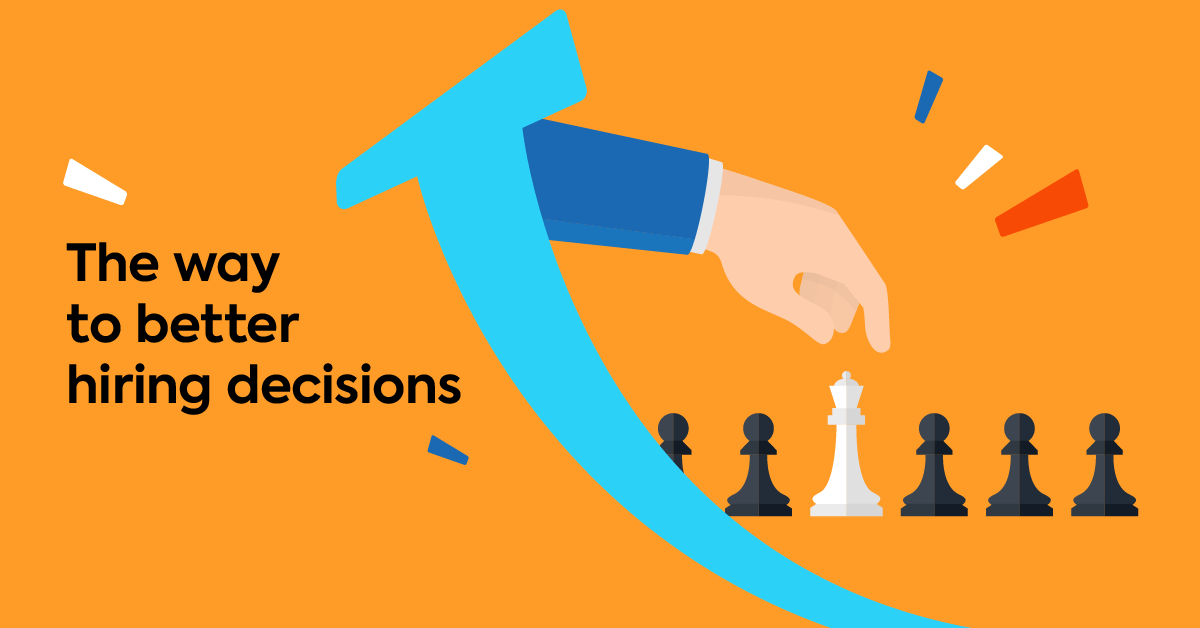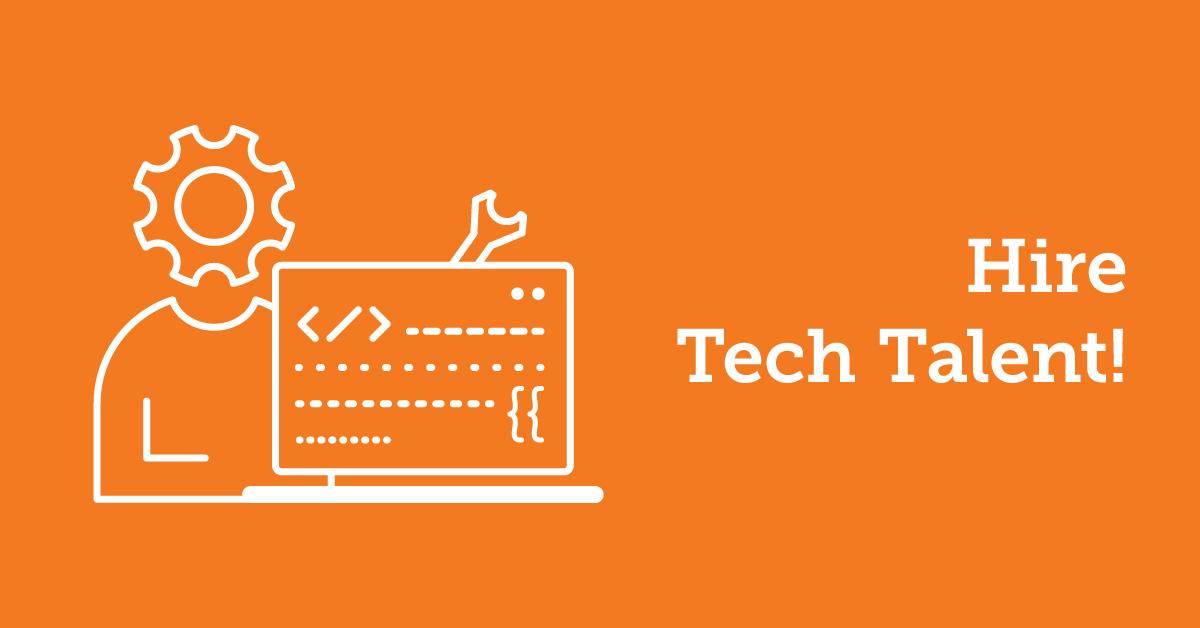Hiring is a risky business. A candidate may look perfect on paper, give satisfactory answers during the interview, and provide the right references. Yet, prove to be the wrong fit for the job soon after they’re hired. Maybe they end up buckling under pressure, or they can’t fall in line with the company’s policies. Either way, you’ve spent valuable time, money, and resources—and have very little to show for it.
The rise of remote work and hybrid workplaces has further complicated things. With interviews conducted via Zoom and contracts signed digitally, evaluating a candidate can be even harder. But it doesn’t have to be.
Hiring best practices are evolving alongside the workplace evolution. And while there are no guarantees you’ll never be wrong about a candidate again (sadly, it happens) following some of the best hiring tips will ensure you’ll have a process in place that will make this the exception, not the rule.
What happens when you don’t hire the right people
First off, a disclaimer: we live in unprecedented times, with the employee quit rate spiraling out of control. Now more than ever, companies find themselves in urgent need of hiring en masse. So it’s understandable that you and your HR department may feel the pressure to secure new candidates fast—but rushing the process will only hurt your organization in the long run.
The cost of hiring the wrong people can be quite steep. Not taking the time to plan the recruitment process and ensure you’re bringing in the right talent will backfire fast. Because a bad hire:
- Costs extra time and money: From writing and posting the job ad to sourcing and assessing candidates and running background checks, your cost per hire is not insignificant. And if you’re not an HR manager by trade but handle the HR along with other aspects of your business, then you also need to account for the working hours you spent in the process.
- Has a negative impact on productivity and morale: Whether your new hire struggles so much that they decide to quit or you need to eventually let them go, it affects your whole team. Especially in hybrid work environments, teams take a while to bond and become productive—and every time you replace or introduce a new team member you disrupt that flow. Eventually, this affects the morale of your employees and cultivates a state of uncertainty about their future in your company.
- Creates a toxic environment—that will affect your reputation: Even if your new hire seems to be very effective in their role, they’re still the wrong fit if they behave badly or contribute to a toxic work environment. And although one wrong hire is not enough to turn the tide, several wrong hires can cultivate a climate of gossip, mistrust, and miscommunication, or even bullying that will in turn affect your company’s reputation. You’ll struggle to find new employees and may even lose customers if word gets around.
Meet TalentLibrary™
A growing collection of ready-made courses that cover soft skills
like employee engagement, diversity & inclusion, and eliminating bullying![]()

How to make good hiring decisions
It’s true that it’s no easy feat to identify and hire the right person—let alone manage to keep them. There’s always an element of luck and timing involved: sometimes, for instance, you may hire a truly great employee, but it turns out they’re not a great fit for your company or your needs.
But getting the knack of hiring the right people consistently? That is something that can be learned.
The goal is to design a hiring process that makes it easy to recognize not only who’s good on paper or just for your current needs, but also who will be a great asset to your team—now and in the future.
This step-by-step approach below will help.
Step 1: The groundwork
Before even posting that job ad, you’ve got work to do. Even if the position you’re hiring for is an existing one and you’re simply looking for a replacement, you’ll still need to:
- Re-evaluate that role: Just because you have the job ad already, from when you last posted it a couple of years ago, that doesn’t mean you need to use it uncritically. Especially now, when so many positions have turned into remote ones to accommodate the new hybrid workplace, This is a good opportunity to see if the requirements and goals of that role have changed.
- Run a skills gap analysis: A skills gap analysis will give you useful information about your teams’ strengths and weaknesses. It will show you where your existing employees currently stand in terms of skills and knowledge, and what they’ll need to develop. Once you know what skills your current employees are lacking, you can make hiring decisions based on finding people who have those skills.
- Decide if you want to promote from within: Let’s say your senior designer just gave their notice. Instead of hiring a new person for that role, you might want to promote one of your existing designers. In that case, you’ll need to adjust your hiring process (e.g., create and share an internal job ad, skip the introductory interview and go straight to an assignment or make an offer directly.) And you’ll need to decide whether you to hire a new designer to replace the one who got promoted.
Step 2: The job advertising
After you’ve done the groundwork, the next phase is to prepare the job description and post your ad. At this point, you need to consider the following in order to attract and hire the right candidate:
- Keeping required qualifications relevant: It’s tempting to create a job ad that lists every skill under the sun. But this will only scare off your candidates—especially the younger ones who may have been a fit. Be strategic about the skills and knowledge you list on the job posting. Don’t undersell the necessary qualifications, but don’t oversell them either.
- Including soft skills: Apart from the hard skills needed for the position, you should also mention the soft skills your new hire should have—or be willing to develop. Soft skills like emotional intelligence, adaptability, and collaboration are very important in the workplace as they help to increase ROI and foster better employee retention.
- Paying attention to DEI: Being inclusive and striving to build a diverse team is not just the right thing to do from a moral standpoint: it’s also the right thing to do from a business one. To make sure you’re not unconsciously excluding some great talent from underrepresented groups, ensure the language you use on your job ad is gender-neutral. Any imagery you include should also be diverse (for example, avoid stock photos that show a team that consists just of white people, as this is a red flag to many BIPOC candidates.)
- Finding the best job boards to post your ad: Now that you’ve identified the what and who you’re looking for, you should also consider the “where”, in terms of placing your job ad. There are many job boards out there, some free and some premium, and your best bet is to post in a mix of both. Also, don’t limit yourself to traditional job sites. Consider sharing your open roles on social media and industry-related websites, too.
Step 3: The hiring process
Once your job ad has been posted and the application window has closed, it’s time to dive into your pool of candidates. Depending on the role, you’ll probably do two or three rounds of interviews and give candidates some assignments.
Throughout the process, you should make sure to:
- Evaluate candidates based on job-related skills: No matter how much you “click” with a candidate during an interview or how friendly they seem, you shouldn’t move them forward if they lack the necessary skills for the job. Everyone shows the best version of themselves during an interview—that doesn’t always translate to performing well after they get the job. Assignments that simulate job tasks will help you identify the best candidates.
- Hire for potential, too: When looking for your next hire, don’t stick to previous experience and past successes. People who may lack in some areas could be stronger in other parts of the job. For example, a candidate who recently decided to make a career change won’t have years of experience in a similar role. But they could make up for this lack of experience with their motivation and determination to follow a new career path. According to Rasty Rueff, on “Navigating non-linear career paths” from TalentLMS’ Keep it Simple podcast series, employers should consider skills, experience, and the demands of the job. Instead of relying only on formal education to make a hiring decision.
- Keep an eye out for people who are coachable: You need team members who have a love for learning and are flexible. If the pandemic taught us anything, it is that your company’s needs are likely to change, so reskilling and upskilling will have a major impact on your success. That’s why it’s best to rely on a workforce that’s adaptive to innovation and has an agile mindset.
Build strong teams with TalentLMS
The training platform that users consistently rank #1.
Easy to set up, easy to use, easy to customize.
More hiring best practices to consider
If you want to go above and beyond, here are some more things to keep in mind:
Invest in a referral program
Internal referrals are very useful if leveraged properly. Not only because great employees are likely to know other great employees, but also because referred candidates tend to stay longer with the company.
This keeps your turnover rate lower and your overall employee satisfaction higher. So, if you want to ensure a great pool of candidates, let your employees in on it.
Hire for diversity
You may have heard the term affirmative action: “An active effort to improve the employment or educational opportunities of members of minority groups and women.” (Merriam-Webster definition)
What does this mean for your hiring process? That you can actively look for candidates from underrepresented groups. For example, if you’re hiring graduates only from Ivy League schools, you’re excluding people who come from different socioeconomic backgrounds. Instead, you could connect with alumni groups from lesser-known schools, target specific locations, or even remove degree requirements from your job ads.
Another example would be to adjust your hiring so that you create gender-balanced teams. You could get in touch with groups that support female employees or source directly female candidates (e.g., on LinkedIn or other professional sites.)
Obviously, the end goal is to build a diverse environment where employees’ gender, race, sexual orientation, and religious beliefs don’t matter. But the world isn’t perfect yet—so you may need to focus on one or two underrepresented groups, to begin with, and over-correct for their characteristics.
Train your HR team
Rasty Rueff comments on the fifth episode of TalentLMS’ podcast, Keep it Simple, that HR teams have a fantastic chance to engage in what they excel at and genuinely desire. Which is connecting with employees. They can delve into their dreams, aspirations, and goals not just for the current job but also for their overall career and life. The aim is to customize the job and company to align with the individual employee.
What’s become clear so far is that a successful hiring process doesn’t work on autopilot. You need a strong HR team that will test new tools and techniques, spot hiccups in the process, and make improvements. And this is an ongoing effort.
That’s exactly why your HR training needs to be ongoing, too.
As the workplace changes, your HR team needs to be on top of trends. From talent management and development strategies to attracting remote candidates, HR courses will help make great hiring decisions, now and in the future.
But, along with the HR team, make sure to provide training to everyone else who’s involved in hiring. Team managers and department heads are often the ones who make the final hiring decisions. So, for example, if you want to build truly inclusive teams, all people who interview candidates at the different hiring stages should learn how to recognize and eliminate unconscious biases.

You made a great hire. Then, what?
You’ve built a strong and well-educated HR team. You’ve followed hiring best practices. You’ve streamlined your process so you consistently make good hiring decisions.
Yet, some new hires will quit a few months after they joined your company. Or, an otherwise perfect candidate will fail to reach your expectations. Does this mean that no matter how hard you try to build a successful hiring process, there are still things that get missed?
Before you admit defeat, have a look at what happens after hiring. Both immediately after hiring and further down the road.
If you put a great effort into wooing a candidate but then left them on their own as soon as they accepted your offer, they’re likely to feel disappointed. Whether experienced or not, new hires need onboarding and training sessions to get familiar with their tasks and their teams.
And, sooner or later, they’ll want to grow their skills, take on more responsibilities, and evolve their careers. If they can’t see a future with your company, they’ll reconsider their present, too. And you’ll find yourself starting a new hiring cycle all over again.
A great hiring process isn’t just about picking the right person and bringing them on board. It’s also about supporting them throughout their whole journey with your company and setting them up for success.
| Tags: hiring



![Boomerang Employees: To Rehire Or Not To Rehire Former Staff? [Tips From 25 Experts]](https://images.www.talentlms.com/blog/wp-content/uploads/2022/01/TLMS_20220105_1200x628.png)